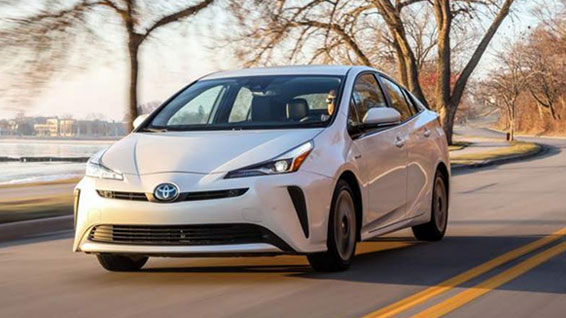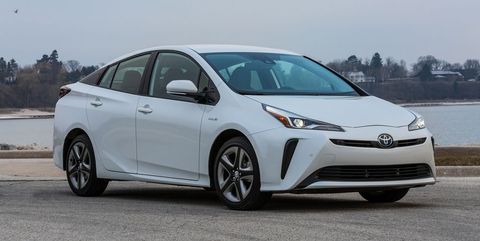What is a Hybrid Car?
Here full guide to What is a Hybrid Car and How Do They Work?
In the time where the world is moving towards electric cars, there are a bunch of people who face problems with the range, charging infrastructure, maintenance and spare parts shortage of these cars. That is where the concept of hybrid cars come from.
Cars are something that is getting some hype these days we will first see what a hybrid car is followed by how these cars work and the benefits and disadvantages of these hybrid cars.
What are hybrid car?
They are the cars that have a combination of both a traditional gas engine along an electric motor, in other words, we can say that is a cross this between a petrol or diesel car and an electric car. These do not fall under electric car criteria as they have a gas engine too same go other ways. Most of the hybrid cars have a petrol engine as it has been found that a diesel engine paired with an electric motor is quite hard to execute and it is also costly to the manufacturer. Hybrid cars gained popularity because it is cheaper to run them, and they are also better for the environment when compared to fully gas-based cars.
The construction of these cars is like they have an electric motor inside along with an internal combustion engine.
How do they work?
There are different kinds of hybrid cars:
-
Series hybrid car:
In this type of car, the internal combustion engine burns the fuel and powers up a generator which recharges the battery through the electricity produced and the battery is then consumed by the electric motor to propel the car forward. These cars can use two power sources at the same time or can just use the electric motor to go for short distances. In these cars, the internal combustion engine kicks in when the car needs high power for faster speed.
-
Parallel hybrid car:
In this type of car, the petrol engine does most of the work the electric engine is there just to provide a boost to the car if needed. Here the internal combustion engine directly propels the car forward instead of charging the battery via a generator. It is cheaper to produce and buy.
-
Series-Parallel hybrid:
As the name suggests it is a combination of Series and Parallel hybrid car. In normal cases, the primary source for these cars is a petrol engine and the electric motor is used to give a push to the car when in need. These cars can go only on electric power but only for short distances.
-
Plug-in hybrid car:
It is the closest any hybrid can ever get to a true electric car. The battery pack can be charged through a generator that is powered by the internal combustion engine or can also be charged from any external power source such as any charging station. The batteries in these cars are much larger compared to the other hybrid cars.
They use a combination of petrol and electric power from batteries to get the car moving. This method uses less fuel than normal internal combustion engine cars making them more efficient to run. These cars emit fewer pollutants benefiting the environment.
The fuel efficiency in real life depends on the type of hybrid, as well as the speed and the driving style of the owner. The cars use many other technologies to increase fuel efficiency such as continuously variable transmission known as CTV. It optimizes engine speeds and gear changes to increase fuel efficiency. The hybrid cars also use the start-stop trick to increase fuel efficiency it allows the petrol engine to shut down by itself saving fuel. All these cars use this trick nowadays to save fuel, but it is not as efficient as it is in hybrid cars.
How do hybrid car charge their battery?
This depends upon the hybrid type as the series and plug-in hybrid, use the internal combustion engine to create electricity and charge their battery. Plug-in hybrids can also use main source chargers to recharge their batteries. Parallel hybrid cars are a little different as they can only charge up by capturing excess energy and converting it to electricity. This excess energy comes from the vehicle when it deaccelerates and is stored in the battery for later use for example regenerative braking.
The best and the main way these batteries use to recharge them is regenerative braking. In this process, the system recovers the heat generated by cars during braking, which would otherwise be lost, and turns the heat energy into electricity and store it in the batteries.
Most of these use batteries that are made up of nickel-metal hydride, rather than lead-acid which are used in normal car batteries. Plug-in’s use lithium-ion batteries hence they can hold more energy in the same space creating a larger battery capacity and give a longer range compared to nickel-metal hydride batteries. The batteries of these hybrid cars are also good quality and hence does not require to be replaced frequently saving more cost in maintenance.
Benefits of hybrid car.
- They come with a choice of power modes, ranging from eco to power giving the driver to choose between maximum efficiency or performance depending on the driving conditions.
- Range anxiety is no more of an issue as the car charges the battery on its own.
- For someone having short running, it can be a good choice as the range from batteries will come at no cost.
- Hybrid cars emit fewer pollutants hence it plays some role in protecting the environment.
Disadvantages of hybrid car.
- The cost of the two engines and research all adds up to increase the cost of the car.
- They are more difficult to fix than regular traditional internal combustion engine-based cars.
- The batteries from these cars are a matter of concern about how to dispose of millions of dead battery packs.
- The materials used in these cars are harvested and mined from the earth. The increase in popularity of hybrid cars means that these materials need to be mined at an increased rate, and in some of these cases, the mining operations can be unfair that is unsafe for the workers.





Trackbacks/Pingbacks